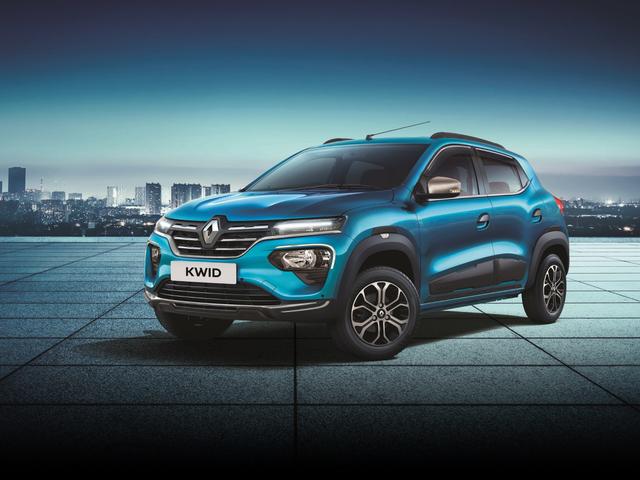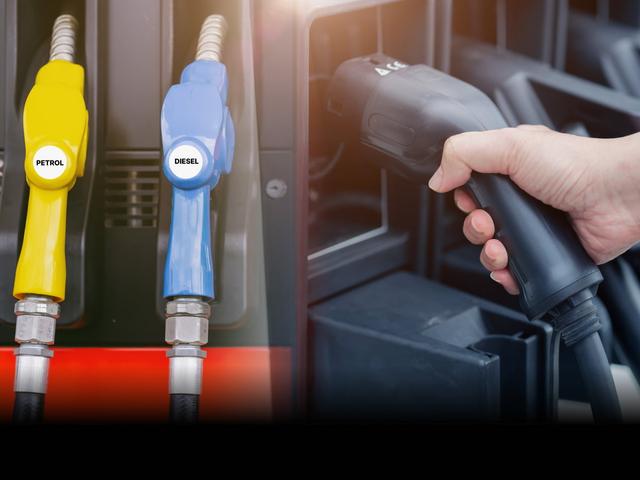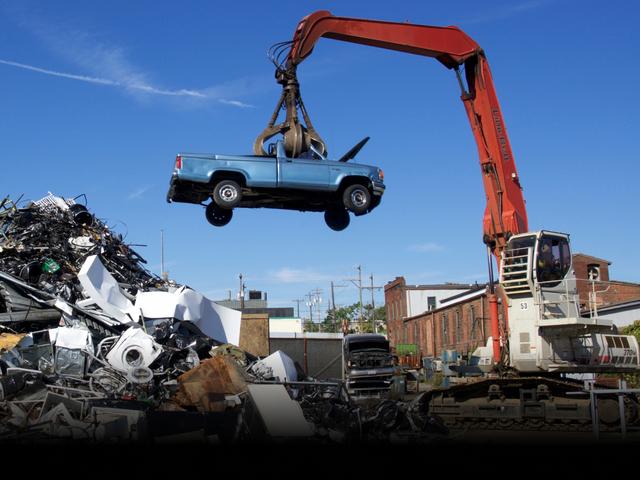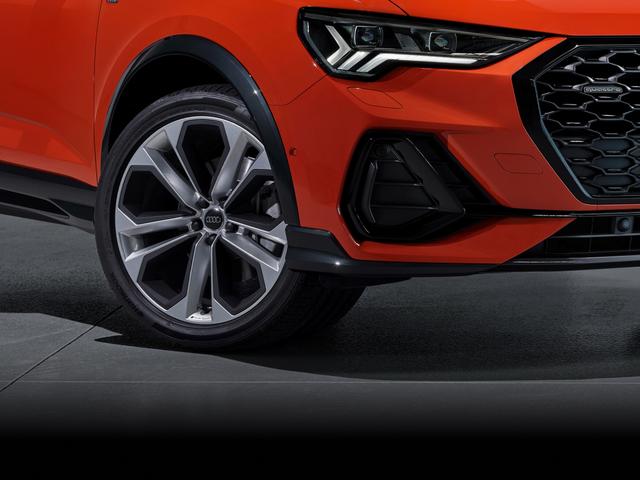A key element of car maintenance entails giving it the occasional wax and polish. Both polishing and waxing are used to maintain a car’s paint job. This not only helps keep your vehicle looking new, well into your ownership, but can maintain a better resale value when the time comes to upgrade to a new set of wheels.
It should be noted that while car wax and car polish both achieve the same goal, they are not the same and can’t be used interchangeably. Polishing and waxing serve different purposes and target specific needs for your vehicle. In our guide that breaks down the key differences between car wax and car polish, we will take a deep dive into where, when, and even why they’re used.
Become a part of the official CARS24 auto community; CLUTCH, where we host lively auto discussions, updates, and more.
What is car wax?

The confusion between car wax and car polish is understandable. They both serve to protect and increase the longevity of your vehicle’s paint job, but they are not interchangeable. Car wax is a protective coating that is made from natural or synthetic ingredients such as polymers.
A car wax typically leaves behind a layer of material which brings out the depth of shine in your paint as it protects your paint’s finish from oxidation and harmful road debris. Put simply, it is applied to the surface of your vehicle in an attempt to create a barrier between the paint and any external elements that could cause the top paint layer to erode. To that effect, UV rays, dirt, dust, and other elements all get repelled by a car wax. What’s great is that it is insoluble in water, so it will remain long after washing your car a few times.
What is car polish?

A car polish should be considered to remove minor imperfections from your vehicle’s paint. A polish essentially helps remove fine layers of the top coat protection. Polishes are made up of abrasive materials or aluminium oxide particles that enhance the appearance of your vehicle’s paint. So minor scratches and other imperfections can be buffed out using a car polish.
There are a number of polishes available on the market. However, they differ in terms of the amount of abrasive materials they contain. Typically, though, regardless of the kind of polish you apply, it would result in your car’s paint looking brighter and blemish-free. You can also use it to restore the clarity of your headlamp casings.
Key differences between car wax and car polish

A car wax and a car polish aim to achieve the same objective, but they are applied at different times. They’re both used to enhance the visual appeal of your vehicle by boosting the quality of the paint job. However, polish and wax differ in a few key aspects, in terms of their function, composition, when they’re applied, and their types. For an instance, it is optimal to get your vehicle polished before applying a car wax. This will ensure that any imperfections on the car’s body are buffed out or taken care of by the car polish before additional layers of protection and gloss are applied by the car wax.
| Car Wax | Car Polish | |
| Function | Protects the car’s paint and acts as a barrier for extended periods against debris | Helpful in removing minor imperfections from the car’s body |
| Composition | Contains natural or synthetic ingredients | Contains abrasive particles or aluminium oxide |
| Finish | Creates a glossy appearance | Restores paint to original colour and shine |
| Duration | Typically lasts for a few months after application | Applied only when required |
| Ease Of Application | Easy to apply, even as a D.I.Y. project | Requires professional application |
| Types | Natural Carnauba, synthetic, ceramic coating wax | Classified into cutting, polishing, and finishing types |
Understanding the purpose of car wax and car polish
When it comes to car maintenance and upkeep, the use of car wax and car polish can be very useful in not just enhancing the look of your vehicle, but also keeping it looking fresh and new for extended periods.
A car wax and a car polish both serve the same role, but they are used in different circumstances. Car wax is a longer-term solution to protect your vehicle’s paint job. Typically, a car wax can last a few months so it should only be considered for occasional application. Car wax is easy to apply, making it a great DIY solution.
On the other hand, a car polish is used to bring your vehicle’s paint job back to its original shine and lustre. Polishing your car will help remove minor imperfections on your vehicle’s paint. It can help to remove small scratch marks and other imperfections, to bring out a smooth and glossy finish. On the downside, a car polish requires specialised tools to apply, so it should only be done by professionals who have the right equipment.
Typically, a car polish always precedes a car wax. The latter is used to enhance and complement the job done by the polish, and helps your car retain its smooth, even and glossy appearance for a long while. It should also be noted that both car polish and wax should be used sparingly, as frequent applications can harm the paint layers.
Proper knowledge of complete car detailing guide will help you choose what's best for your car.
Types of car wax
There are a lot of options to choose from when it comes to the kind of wax you want to apply to your vehicle. Broadly speaking, however, they fall under two main categories:
1) Natural wax: As the name suggests, natural wax comes from natural sources like carnauba (which comes from the carnauba palm tree) or beeswax. This should be your pick if you want a bright shine. The downside is that it doesn’t last as long as synthetic wax.
Natural waxes can be had in paste, liquid, and spray formats. Of the three, the spray is the easiest to apply. Once the car is bone dry, simply spray in sections to apply the wax, and be sure to clean up any excess with a cloth. Liquid wax is harder to apply in comparison, but it offers more paint protection. In comparison, paste wax takes the longest to apply, but is most commonly found.
2) Synthetic wax: Synthetic wax is made up of man-made materials like polymers and silicones, and comes in spray, paste and liquid formats. In comparison to natural wax, it typically doesn’t leave a shine that’s as bright, but the upside is that it lasts longer. This is the ideal pick for people who don’t have time to reapply wax all the time.
Types of car polish
As with car wax, there are multiple kinds of car polish available depending on what kind of surface it’s being used on, and what finish is desired.
1) Abrasive car polish: Abrasive car polish contains abrasive particles that remove small scratches and imperfections from the paint surface. It is ideal for patchy, damaged paint jobs.
2) Non-abrasive car polish: Non-abrasive polishes are gentle on the paint surface and are ideal for use on newer cars with less visible imperfections. It provides a smooth finish and enhances the shine of the paint.
3) All-in-one car polish: An all-in-one polish contains both abrasive and non-abrasive particles, making it ideal for use on a wide range of paint surfaces. It can remove minor imperfections while also providing a smooth, glossy finish.
4) Spray-on car polish: Spray-on polishes are easy to apply and dry quickly. They are ideal for touch-ups between washes.
5) Ceramic car polish: This type of car polish contains ceramic particles that create a durable, water-resistant layer on the paint surface. It provides long-lasting protection and enhances the shine of the paint.
Application methods
There are a number of ways to apply car wax and polish to your vehicle. This depends on the kind of product being used, and where it’s being applied and requires a varying number of microfibre cloths. Some of them include:
1) Hand application: This method involves using a soft cloth or foam applicator pad to apply the product by hand, working in small sections at a time.
2) Foam pad application: A foam pad attached to a power drill or polisher is used to apply the product quickly and evenly.
3) Spray application: You can also choose a spray bottle to apply the product evenly over the surface of the car.
4) Machine application: Machine applications are the most complex and involve using a buffer or a polisher, to apply the product evenly over the surface of the car.
For best results, strictly follow the application instructions recommended by the product’s manufacturer.
You may try and apply the product in small sections to ensure that the product is applied evenly throughout. Ensure the pads and clothes you use are clean before applying the product. Heat can have adverse effects on the wax, so ensure the process is performed in a shaded area.
Benefits of using car wax and car polish
There are several benefits attached to using car wax and polish on your vehicle. They include:
1) Creating a protective layer over the paint of your vehicle so that UV rays, dirt, grime, and bird droppings, etc., don’t affect the quality of the paint in the long run.
2) Car waxes usually have hydrophobic properties, allowing water to roll off the surface, thus preventing corrosion and rusting over time
3) Using wax and polish also makes it easier to clean the car, as dirt and grime don’t stick to the exterior as much.
4) They help preserve the paint quality of the vehicle and give it an immaculate shine for extended durations.
5) Polishing helps remove small imperfections like scratches and swirl marks from the surface of the paint.
Limitations of using car wax and car polish
It is undeniable that car wax and car polish have multiple benefits attached to them. That said, they also come with a few limitations that are worth considering before you use them on your vehicle. Some of them include:
1) Car wax requires frequent touch-ups (between one to three months), meaning you will have to keep reapplying it to maintain your car’s shine.
2) Applying car wax is also a time-consuming process that requires precision. This is because it needs to be evenly applied in smaller sections to ensure a smooth finish. If improperly applied, it could potentially leave a residue on the vehicle’s surface that’s hard to remove.
3) Certain car polishes contain abrasive compounds that your vehicle’s paint may be too old to handle. This could end up making the paint worse, so it’s always ideal to employ the services of a professional.
4) High-quality car waxes can be expensive. As an example, a 330 gm tub of wax can cost around ₹1,700. Only go ahead with a wax treatment if the quantity and cost are both agreeable.
FAQs
Q. What does car wax and polish do?
Car polish helps remove minor imperfections on your car’s exterior and bring back the shine. Car wax helps create a protective layer around your car.
Q. Is wax good or bad for cars?
Used in the right quantity, and if applied correctly, car wax is a great option for car owners looking to protect their vehicle’s paint job. However, wax should be applied sparingly as excessive application can harm the paint.
Q. Which wax polish is best for a car?
There are different types of car waxes available. The one that’s the best is dependent on the kind of surface it’s being applied to and the kind of finish that’s desired.
Q. How long does car wax last?
It depends on the kind of wax you apply, but car wax typically lasts anywhere between one and three months.
Q. Can I wax without polishing?
If your vehicle has a clean exterior devoid of minor imperfections, then you can get it waxed without polishing.








.jpg&w=828&q=75)



.jpg&w=828&q=75)



.jpg&w=828&q=75)




-(1).jpg&w=828&q=75)










.jpg&w=640&q=75)




